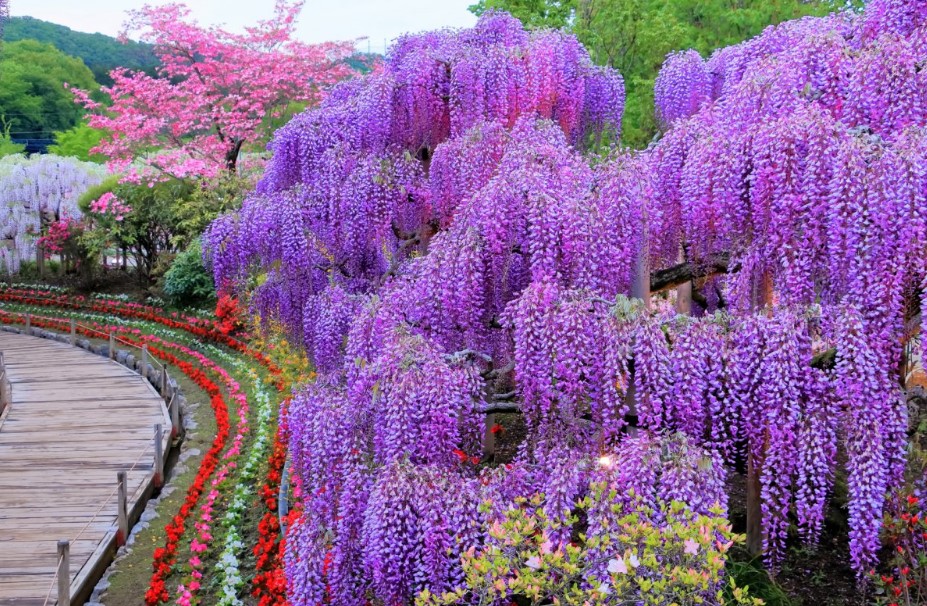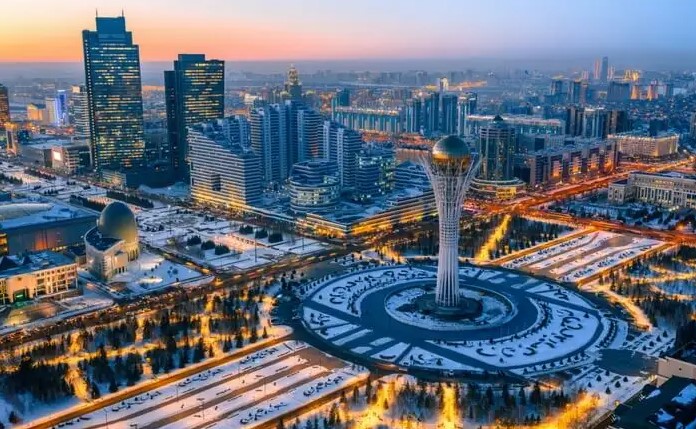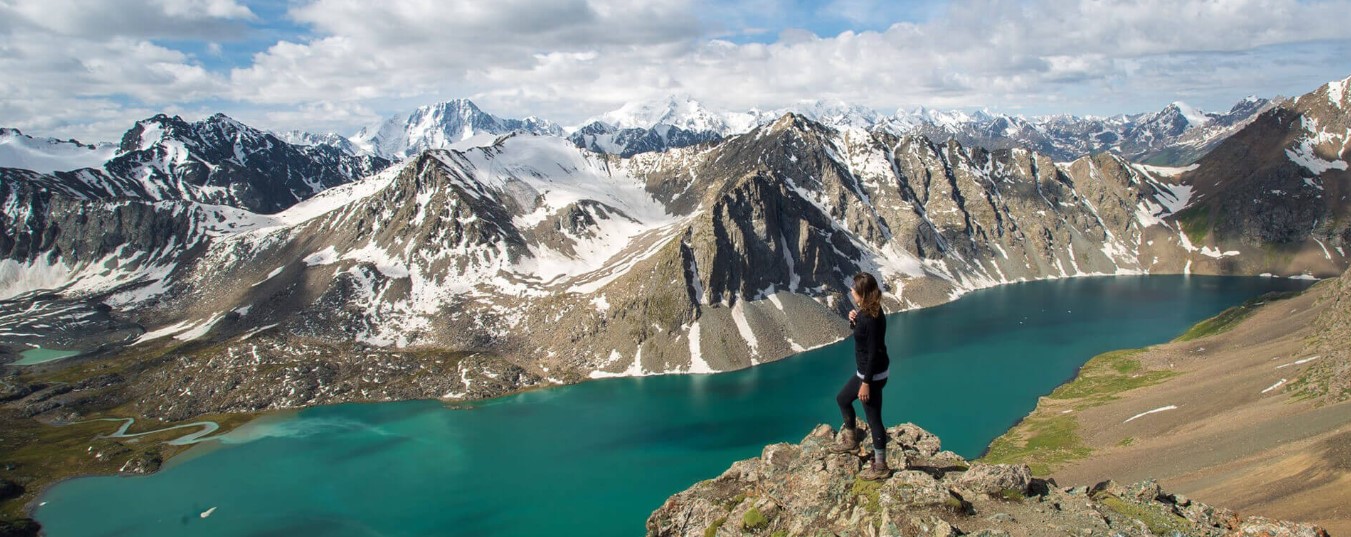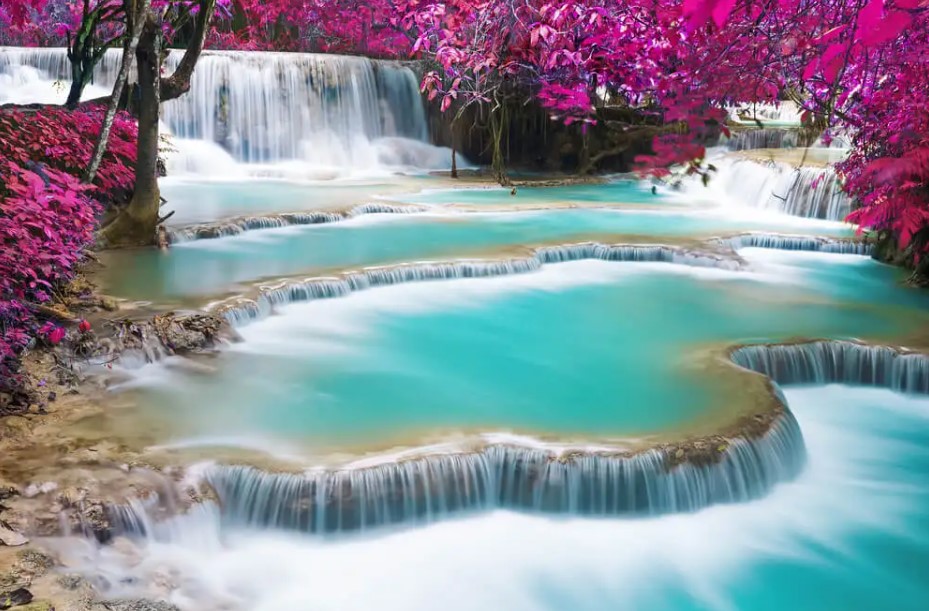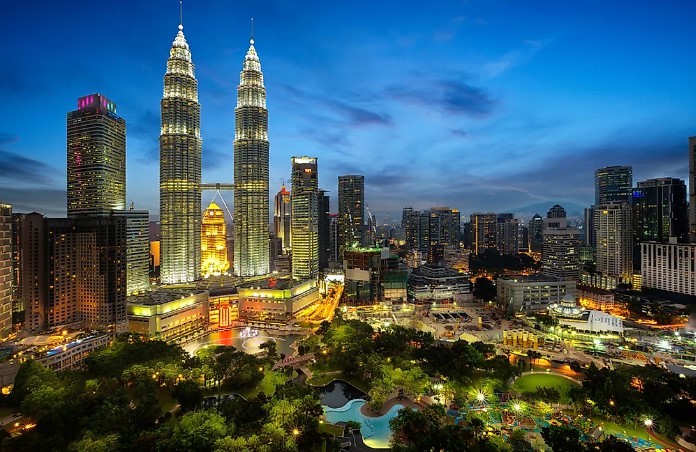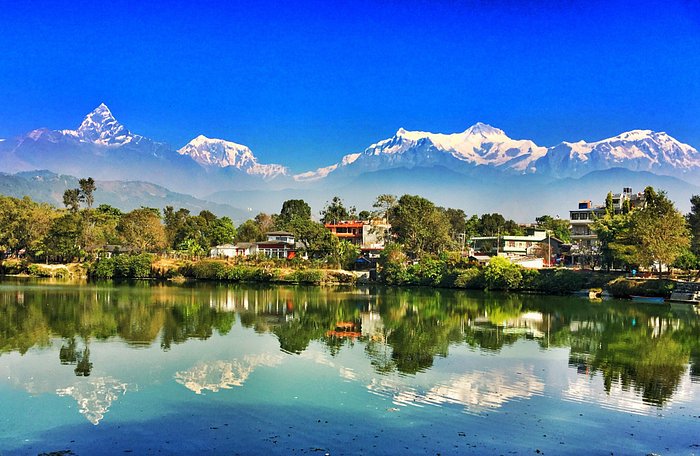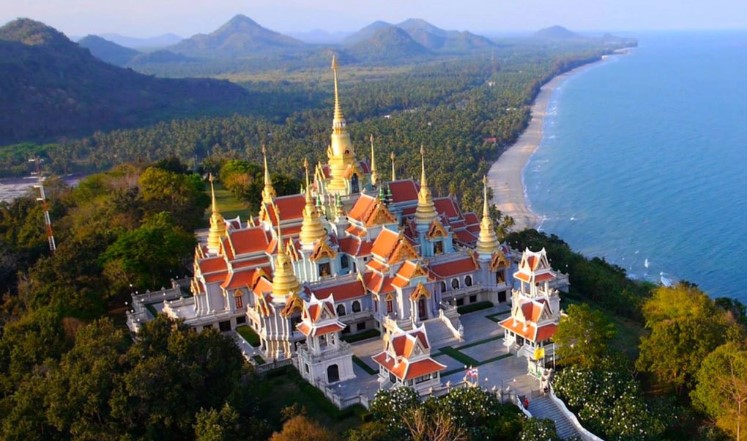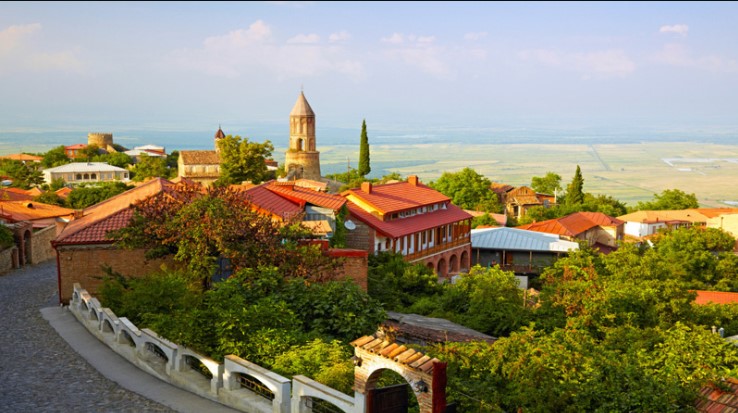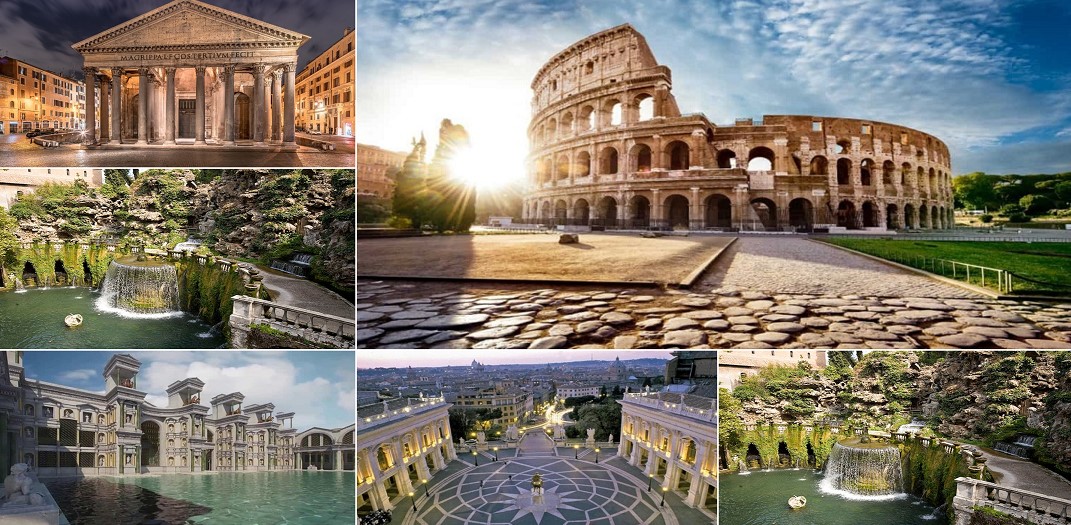Discover the beauty of Argentina's famous places to visit. Dive into a world of rich culture, stunning landscapes, and vibrant cities. Plan your dream vacation now! Argentina, a land of captivating beauty and diverse landscapes, beckons travelers from around the world.
Argentina Famous Places to Visit: A Journey into the Heart of South America
From the bustling streets of Buenos Aires to the pristine wilderness of Patagonia, this South American gem has it all. In this comprehensive guide, we will explore the most famous places to visit in Argentina, ensuring your journey is filled with memorable experiences.
01. Buenos Aires
Buenos Aires, the vibrant capital of Argentina, is a city that seamlessly blends European elegance with South American flair. Nestled on the eastern shore of the Río de la Plata, this sprawling metropolis is a captivating fusion of history, culture, and cosmopolitan energy.
Stroll through the charming neighborhoods, like the historic San Telmo with its cobblestone streets and tango bars, or the chic Palermo with its trendy boutiques and restaurants. Explore the iconic Plaza de Mayo, where the Casa Rosada stands as a symbol of Argentina's political history. Art enthusiasts can visit the world-renowned MALBA museum, while football aficionados can experience the fervor of a Boca Juniors match at La Bombonera.
Culinary delights abound in Buenos Aires, with parillas (steakhouses) serving mouthwatering Argentine beef, and cafés offering delectable empanadas and dulce de leche treats. The city's nightlife is legendary, with tango shows, live music venues, and late-night milongas (tango dance halls) where you can dance the night away.
02. Iguazu Falls
Nature's masterpiece, Iguazu Falls, is a breathtaking spectacle located on the border between Argentina and Brazil. These awe-inspiring waterfalls cascade dramatically through lush rainforests, creating an unforgettable panorama of raw natural beauty.
The falls consist of approximately 275 distinct cascades spread across nearly 2 miles, with the iconic Devil's Throat being the most mesmerizing. A series of walkways and viewpoints offer visitors unparalleled access to the falls, allowing them to get up close and experience the thundering roar and misty embrace of this UNESCO World Heritage Site.
Surrounded by the rich biodiversity of the Iguazu National Park, the area is a haven for wildlife enthusiasts, with the chance to spot colorful toucans, playful coatis, and graceful butterflies. Adventure seekers can take boat rides beneath the falls, providing an adrenaline-pumping, immersive encounter with the natural wonder.
03. Perito Moreno Glacier
In the heart of Patagonia, the Perito Moreno Glacier is a glacier unlike any other. Towering over Lake Argentino, this colossal ice mass is a living testament to the Earth's geological wonders. What sets it apart is its unique characteristic of advancing while most glaciers in the world are receding.
Visitors can marvel at the glacier's enormous face, which reaches heights of up to 240 feet and spans over 19 miles. Witnessing the mesmerizing process of calving, where massive chunks of ice break off and plunge into the lake, is a thrilling experience. Boardwalks and viewing platforms provide spectacular vantage points for observing this natural spectacle.
Adventurous travelers can embark on guided ice trekking tours to explore the glacier's crevasses and azure-blue ice caves. Surrounded by the pristine beauty of Los Glaciares National Park, Perito Moreno is a captivating destination for nature enthusiasts and photographers alike.
04. Mendoza
Mendoza, nestled in the foothills of the Andes Mountains, is Argentina's premier wine region and a haven for outdoor enthusiasts. This picturesque province is renowned for its vineyards, producing some of the world's finest Malbec wines. Visitors can tour the vineyards, taste exquisite wines, and savor regional cuisine at charming wineries and restaurants.
Beyond the vineyards, Mendoza offers opportunities for adventure, including hiking, mountain biking, and white-water rafting in the stunning Andean landscape. The nearby Aconcagua, the highest peak outside of Asia, beckons mountaineers and trekkers. The city of Mendoza itself is a charming oasis, with tree-lined streets, bustling plazas, and a relaxed atmosphere.
Mendoza is also known for its traditional festivals and vibrant cultural scene, celebrating Argentina's rich heritage through music, dance, and cuisine. With a backdrop of the towering Andes, Mendoza promises a harmonious blend of nature, culture, and culinary delights.
05. Bariloche
Nestled in the Argentine Patagonia, San Carlos de Bariloche, commonly referred to as Bariloche, is a breathtaking lakeside town surrounded by the snow-capped Andes and shimmering glacial lakes. Known for its alpine charm, Bariloche is often referred to as the "Switzerland of South America."
The town's architecture reflects its European influence, with Swiss-style chalets and Bavarian-inspired buildings. The heart of Bariloche is the Civic Center, home to artisanal chocolate shops, boutiques, and the iconic clock tower. Strolling along the shores of Lake Nahuel Huapi, visitors can enjoy panoramic views of the stunning landscape.
Bariloche is a year-round destination, offering skiing and snowboarding in winter, and hiking, mountain biking, and water sports in the summer. The region is also famous for its delectable chocolates and artisanal beers, making it a paradise for food lovers.
Exploring the nearby Nahuel Huapi National Park reveals pristine forests, crystal-clear lakes, and the opportunity to embark on hiking trails with awe-inspiring vistas. Whether seeking adventure or tranquility, Bariloche beckons travelers with its natural beauty and Alpine-inspired charm.
06. Ushuaia
Nestled at the southernmost tip of Argentina, Ushuaia is often hailed as the "End of the World" and is the world's southernmost city. This enchanting destination is a gateway to the rugged beauty of Tierra del Fuego National Park, boasting dramatic landscapes of glaciers, snow-capped peaks, and pristine forests.
Adventure seekers are drawn to Ushuaia for its exceptional hiking, skiing, and wildlife-watching opportunities, including encounters with penguins and sea lions.
The town itself features colorful buildings, a bustling port, and a charming blend of Argentine and indigenous culture. Visitors can explore the fascinating Maritime Museum and even embark on expeditions to Antarctica from this remote outpost.
07. Salta
Salta, often referred to as "La Linda" (The Beautiful), is a gem of northern Argentina. This city captivates with its colonial charm, splendid architecture, and a vibrant cultural scene.
Nestled in the Andes foothills, Salta boasts a picturesque landscape of rolling hills, vineyards, and colorful valleys. The city's historic center is a treasure trove of colonial-era churches, plazas, and museums, offering a glimpse into Argentina's rich heritage.
Don't miss the breathtaking Train to the Clouds, an engineering marvel that takes you through stunning mountain terrain. Salta is also renowned for its folk music, traditional dances, and regional cuisine, making it a cultural hub in the country's northwest.
08. Córdoba
Córdoba, Argentina's second-largest city, is a captivating blend of history, culture, and natural beauty. Nestled in the foothills of the Sierras de Córdoba, this vibrant city offers a diverse range of attractions.
The historic quarter, with its colonial architecture and ancient Jesuit churches, is a UNESCO World Heritage site. Córdoba is also a thriving university town, known for its youthful energy and bustling nightlife.
Nature enthusiasts can explore nearby parks and hiking trails, while adventure seekers can go paragliding or horseback riding. The city's warm, Mediterranean climate makes it a year-round destination, and its culinary scene features traditional Argentine dishes with a regional twist.
09. Quebrada de Humahuaca
A UNESCO World Heritage site, the Quebrada de Humahuaca is a striking geological formation in the Argentine Northwest. This narrow mountain valley stretches for over 150 kilometers, revealing a captivating palette of colors and rock formations.
As you traverse the Quebrada, you'll encounter charming villages like Purmamarca, known for its Seven Colors Hill, and the historic town of Humahuaca with its ornate church and vibrant local markets.
The landscape is dotted with ancient ruins, Inca forts, and indigenous traditions that have endured for centuries. The Quebrada is a haven for hikers, photographers, and those seeking a profound connection with Argentina's rich indigenous heritage.
10. Puerto Madryn
Nestled on the shores of the Golfo Nuevo in Patagonia, Puerto Madryn is a coastal paradise known for its extraordinary marine life. This charming town serves as the gateway to the Peninsula Valdés, a UNESCO World Heritage site and a sanctuary for diverse wildlife. Visitors can witness southern right whales, sea lions, penguins, and numerous bird species in their natural habitat.
Puerto Madryn's beaches offer opportunities for relaxation, and it's a hub for adventure activities like scuba diving and kayaking. The town also celebrates its Welsh heritage, with a distinct Welsh tea culture and a unique Welsh choir festival. It's a destination where nature and culture converge.
11. San Carlos de Bariloche
Nestled in the Argentine Andes and situated along the shores of the pristine Lake Nahuel Huapi, San Carlos de Bariloche is a postcard-perfect destination known for its breathtaking natural beauty and Alpine charm.
Often called the "Switzerland of Argentina," this city is a gateway to Patagonia's wonders. The city center features picturesque alpine architecture, chocolate shops, and artisanal breweries.
Outdoor enthusiasts flock here for hiking, skiing, and water sports, while the surrounding national parks offer stunning vistas, including the iconic Cerro Catedral. The region's culinary scene showcases Argentine classics like asado (barbecue) and regional delicacies like chocolate and craft beer, making Bariloche a gastronomic delight as well.
12. Talampaya National Park
Talampaya National Park, located in the La Rioja Province of Argentina, is a captivating natural wonder that boasts a unique blend of geological formations, rich biodiversity, and historical significance. Covering an expansive area of 2,150 square kilometers, this UNESCO World Heritage Site is a testament to the country's stunning landscapes.
The park's defining feature is its dramatic red sandstone canyons, sculpted by millions of years of erosion. Towering walls, some reaching up to 150 meters in height, create a labyrinth of winding pathways and hidden alcoves that beckon explorers. The park's crown jewel is the aptly named "Cathedrals," an awe-inspiring amphitheater-like formation that seems to defy gravity.
Talampaya is not just a geological wonderland; it's also home to a diverse range of flora and fauna. The park shelters various species of cacti, hardy desert plants, and elusive wildlife such as guanacos, foxes, and condors. Birdwatchers will be enthralled by the opportunity to spot these magnificent creatures soaring high above the canyons.
For those intrigued by history, Talampaya boasts a rich heritage. Ancient petroglyphs, evidence of prehistoric civilizations, adorn the rocks, offering a glimpse into the past. It's a testament to the enduring connection between humans and this remarkable landscape.
Adventure-seekers can embark on guided hikes and 4x4 tours through the rugged terrain, immersing themselves in the stark beauty of the park. As the sun sets, the canyons come alive with a fiery glow, making it an ideal spot for stargazing and photography.
Whether you're a nature enthusiast, a history buff, or simply in search of breathtaking landscapes, Talampaya National Park promises an unforgettable experience.
13. Cafayate
Nestled in the heart of Argentina's northwest, Cafayate is a picturesque town that has earned its reputation as the "Land of Sun and Good Wine." This charming destination, located in the Salta Province, is a hidden gem in the country's wine region.
Cafayate is renowned for its high-altitude vineyards, which produce some of Argentina's finest wines, particularly the Torrontés white wine. The surrounding landscape is a patchwork of vineyards, framed by rugged red rock formations, giving the region a unique and enchanting character.
The town itself is a delightful blend of colonial architecture, artisan markets, and friendly locals. Strolling through its streets, you'll encounter colorful adobe buildings, inviting cafes, and open-air markets where you can sample local delicacies like empanadas and llama meat dishes.
Nature enthusiasts will be captivated by the Quebrada de las Conchas, a nearby canyon with surreal rock formations, including the iconic Amphitheater, where acoustics amplify the sounds of nature. Adventure seekers can explore the region by hiking, mountain biking, or horseback riding.
Cafayate's warm climate and clear skies also make it an excellent spot for stargazing. At night, the sky comes alive with constellations, providing a mesmerizing backdrop to the tranquil town.
Whether you're a wine connoisseur, a lover of breathtaking landscapes, or simply seeking a peaceful retreat, Cafayate offers a taste of Argentine culture and natural beauty that is sure to leave a lasting impression.
14. El Calafate
Nestled on the southern shores of Lake Argentino in Patagonia, El Calafate is a captivating gateway to some of Argentina's most iconic natural wonders. This charming town, named after the indigenous calafate berry, serves as the starting point for exploring the awe-inspiring Los Glaciares National Park.
The centerpiece of the park is the renowned Perito Moreno Glacier, a massive ice formation that seems to defy time. Visitors can witness the glacier's breathtaking beauty up close from viewing platforms, where they may even catch a glimpse of massive ice chunks calving into the lake below.
El Calafate is a haven for adventure enthusiasts and nature lovers. Hiking trails wind through ancient forests, leading to pristine lakes and panoramic viewpoints. For the more intrepid, ice trekking on the glacier's surface is a thrilling experience.
The town itself exudes a warm and welcoming atmosphere. Quaint shops, artisan boutiques, and restaurants offering delicious Patagonian cuisine line the streets. Sample local dishes like lamb and indulge in artisanal chocolates.
El Calafate's proximity to the Southern Patagonian Ice Field ensures a climate of unpredictability, but the dramatic landscapes and stunning natural beauty make it worth a visit year-round. Whether you're exploring glaciers, hiking in the Andes, or simply soaking in the tranquility of the region, El Calafate promises a memorable Patagonian adventure.
15. San Juan
San Juan, a province located in the west of Argentina, is a region of striking contrasts. Nestled between the towering Andes Mountains and the arid desert, it offers a diverse range of natural landscapes and cultural experiences.
The province is known for its rich agricultural heritage, producing an abundance of grapes, olives, and other crops. It's a prominent wine region, with wineries and vineyards that produce exceptional Malbec and Syrah wines. The picturesque Ullum Dam and San Agustin Dam offer opportunities for water sports and relaxation.
San Juan's rugged terrain is ideal for adventure seekers. The Andes Mountains provide a playground for hiking, mountain biking, and rock climbing. The Ischigualasto Provincial Park, often called the "Valley of the Moon," is a UNESCO World Heritage Site known for its unique geological formations and dinosaur fossils.
In addition to its natural beauty, San Juan boasts a vibrant cultural scene. The capital city, San Juan, is home to numerous museums, galleries, and theaters showcasing the province's history and artistic talents. The people of San Juan are known for their warmth and hospitality, making visitors feel right at home.
Whether you're exploring its vineyards, delving into its geological wonders, or immersing yourself in its culture, San Juan offers a diverse and captivating experience in the heart of Argentina.
16. Rosario
Rosario, often referred to as the "Cradle of the Argentine Flag," is a dynamic and vibrant city situated on the banks of the Paraná River. Located in the Santa Fe Province, it is Argentina's third-largest city and a hub of culture, history, and industry.
The city's most iconic landmark is the National Flag Memorial, a monumental complex that commemorates the creation of the Argentine flag. Its soaring tower offers panoramic views of the city and the river, making it a must-visit attraction.
Rosario's riverfront promenade, known as La Costanera, is a lively place to take a stroll, enjoy a mate, or simply soak up the sun. The city's parks and green spaces, such as Parque Independencia, provide a respite from urban life.
Culturally, Rosario is known for its vibrant arts scene, with theaters, galleries, and live music venues showcasing local talent. The city also has a thriving culinary scene, offering a wide range of traditional Argentine dishes as well as international cuisine.
Rosario's bustling streets are lined with shops, boutiques, and markets, making it a shopper's paradise. Whether you're looking for artisan crafts, fashion, or souvenirs, you'll find it here.
With its rich history, lively culture, and picturesque riverfront, Rosario is a city that encapsulates the spirit of Argentina and offers a unique blend of urban sophistication and natural beauty.
17. San Martín de los Andes
Nestled in the Argentine Patagonia, San Martín de los Andes is a picturesque mountain town surrounded by stunning natural beauty. Situated on the shores of Lake Lácar and surrounded by the Lanín National Park, it's a paradise for outdoor enthusiasts. The town's charming Alpine-style architecture blends seamlessly with the rugged Andean landscape.
The jewel of San Martín de los Andes is Lake Lácar, a pristine, turquoise gem perfect for water activities like kayaking, fishing, and sailing. Adventure seekers can explore the nearby Andes Mountains with hiking, mountain biking, and skiing in the winter.
The town's inviting atmosphere is enhanced by artisan shops, local craft markets, and cozy cafés serving regional delicacies. Road trips along the breathtaking Seven Lakes Route, starting from San Martín de los Andes, offer unparalleled views and the chance to connect with nature.
18. Tigre
Tigre, a charming town in the Buenos Aires Province, is a tranquil escape from the bustling capital city. Located in the Paraná Delta, it's a water-centric destination with a unique charm. Navigating the labyrinthine waterways in traditional rowing boats or catamarans is a quintessential Tigre experience.
The town's vibrant Mercado de Frutos is a treasure trove of artisan crafts, fresh produce, and local goods. Museums like the Museo de Arte Tigre offer cultural enrichment, while Parque de la Costa provides thrilling amusement park rides.
Tigre's cuisine is a blend of Argentine flavors with Delta specialties. Savoring a meal at a riverside restaurant while watching the boats glide by is a memorable experience. Tigre is a haven for nature lovers, offering bird-watching, hiking, and picnicking in the lush greenery of the delta.
19. San Rafael
San Rafael, situated in the Mendoza Province, is an enchanting oasis in the heart of Argentina's wine country. Surrounded by vineyards and framed by the imposing Andes Mountains, it's a destination for wine enthusiasts and adventurers alike.
The wineries of San Rafael produce world-class Malbecs and other varietals. Visitors can embark on wine tours and tastings, immersing themselves in the art of winemaking. The Atuel Canyon, a natural wonder nearby, offers dramatic landscapes carved by the Atuel River, making it ideal for kayaking and rafting.
San Rafael's underground caverns in the Cañón del Atuel are a geological marvel, featuring intriguing rock formations. For those seeking relaxation, the region boasts hot springs and thermal baths where you can unwind amidst natural beauty.
20. Jujuy
Jujuy, a province in northwest Argentina, is a land of vibrant culture, rugged terrain, and indigenous traditions. The provincial capital, San Salvador de Jujuy, is a gateway to the region's captivating landscapes and rich heritage.
The Quebrada de Humahuaca, a UNESCO World Heritage Site, is a geological wonder featuring colorful rock formations and ancient settlements. Indigenous communities in the area celebrate their culture through traditional music, dance, and festivals, offering a unique cultural experience.
Jujuy's diverse landscapes include the Salinas Grandes salt flats, the Yungas rainforest, and the Puna highlands. These varied ecosystems make the province a haven for trekking, birdwatching, and exploring off-the-beaten-path destinations.
21. La Plata
La Plata, the capital of the Buenos Aires Province, is a meticulously planned city known for its neoclassical architecture, green spaces, and intellectual heritage. It's often called the "City of Diagonals" due to its distinctive grid of diagonal streets.
The city's centerpiece is the imposing La Plata Cathedral, a masterpiece of architecture. The Museum of Natural Sciences and the Museum of Contemporary Art provide cultural enrichment, while the Planetarium and the Bosque Platense offer recreational activities.
La Plata is home to several universities and has a vibrant student population, contributing to a lively nightlife scene and a plethora of dining options. The city's parks and gardens, like the Paseo del Bosque, offer a tranquil retreat within the urban landscape.
With its cultural richness and well-preserved architecture, La Plata is a unique destination that offers a blend of history, academia, and urban charm.
22. San Antonio de Areco
San Antonio de Areco, a quaint town in the Buenos Aires Province, is a living testament to Argentina's gaucho culture and heritage. It's a place where time seems to stand still, offering a charming escape from the modern world.
The cobblestone streets and colonial architecture transport visitors to a bygone era. The town is famous for its silversmiths, leatherworkers, and artisans who craft traditional gaucho goods, making it a shopper's paradise for unique souvenirs.
San Antonio de Areco's museums, including the Museo Gauchesco y Parque Criollo Ricardo Güiraldes, provide insight into the rich history of the Argentine pampas and its iconic cowboy culture. The annual Fiesta de la Tradición celebrates gaucho traditions with rodeos, folk music, and dance.
Visitors can explore the picturesque countryside on horseback, connecting with the land and the spirit of the gauchos. The lush green fields and estancias (ranches) are a stark contrast to the bustling city life, offering a serene and cultural retreat.
23. Tandil
Tandil, a charming city located in the Buenos Aires Province, is a delightful blend of natural beauty, history, and vibrant culture. Nestled in the Tandilia hills, this picturesque destination offers a wide range of activities for visitors.
The city is known for its granite rock formations, including the iconic Cerro Tandil, which provides panoramic views of the surrounding landscape. Tandil's parks and trails are perfect for hiking, mountain biking, and picnicking. Cascada del Velo de la Novia, a waterfall in the region, is a serene spot to unwind.
Tandil is also rich in history, with colonial-era buildings and museums that recount its past. The Calvario Hill is a popular pilgrimage site, featuring life-sized sculptures of Christ's crucifixion. The city's vibrant arts scene is showcased in its theaters, galleries, and live music venues.
Gastronomy enthusiasts can savor the local cuisine, including Tandil's famous salami and artisanal cheeses. The city's vibrant farmers' markets and restaurants offer a taste of Argentine flavors.
24. Villa General Belgrano
Nestled in the heart of the Córdoba Province, Villa General Belgrano is a charming alpine-style town with a strong German influence. It's known for its warm hospitality, scenic surroundings, and unique Oktoberfest celebrations.
The town's picturesque streets are lined with Bavarian-style buildings, offering a delightful atmosphere reminiscent of Europe. Visitors can explore artisan shops, enjoy traditional German pastries, and sip on locally brewed beer.
Villa General Belgrano's natural beauty is equally enticing. The nearby Sierras de Calamuchita provide opportunities for hiking, horseback riding, and water sports in the clear mountain lakes. The lush landscapes make it an ideal destination for relaxation and outdoor adventure.
The town's Oktoberfest is a highlight, drawing crowds from all over Argentina and beyond. This lively celebration features beer tents, folk music, and traditional Bavarian dancing, creating a festive atmosphere that's truly unique in Argentina.
25. Esteros del Iberá
Esteros del Iberá, located in the Corrientes Province, is one of Argentina's hidden ecological treasures. This vast wetland ecosystem, often referred to as the "Iberá Marshes," is a paradise for nature lovers and wildlife enthusiasts.
The wetlands are home to an astonishing array of wildlife, including capybaras, caimans, marsh deer, and over 350 species of birds. Visitors can explore the waterways by boat, kayak, or canoe, immersing themselves in this thriving ecosystem.
Esteros del Iberá offers opportunities for wildlife watching, with a chance to spot elusive creatures like jaguars and giant otters. Guided tours and hikes provide insight into the delicate balance of this unique habitat.
The region also has a rich cultural heritage, with indigenous Guarani communities that offer a glimpse into their way of life. Visitors can learn about traditional fishing methods and the importance of conservation efforts.
For those seeking a remote and tranquil natural escape, Esteros del Iberá is a breathtaking destination where the wonders of the natural world take center stage.
Frequently Asked Questions (FAQs)
Q: What is the best time to visit Argentina?
A: Argentina's vast size means it offers varied climates year-round. However, the best time to visit is during the spring (October to November) and autumn (March to April) when the weather is mild and pleasant.
Q: Do I need a visa to travel to Argentina?
A: It depends on your nationality. Some countries require a visa, while others are granted a tourist visa upon arrival. Check the requirements before planning your trip.
Q: Is it safe to travel in Argentina?
A: Argentina is generally safe for travelers, but like any other destination, it's essential to take precautions. Be vigilant in crowded areas, avoid displaying expensive belongings, and use reputable transportation services.
Q: What currency is used in Argentina?
A: The official currency of Argentina is the Argentine Peso (ARS). It's recommended to exchange currency at official exchange offices or banks.
Q: Can I drink tap water in Argentina?
A: While tap water in some parts of Argentina is safe to drink, it's advisable to stick to bottled water, especially in remote areas and smaller towns.
Q: What's the local cuisine like in Argentina?
A: Argentine cuisine is famous for its beef. Don't miss trying traditional dishes like asado (barbecue), empanadas, and mate, a popular herbal tea.
Conclusion
Argentina's famous places to visit offer a kaleidoscope of experiences, from the vibrant city life of Buenos Aires to the pristine natural beauty of Patagonia. With its rich culture, diverse landscapes, and warm hospitality, Argentina invites you to embark on a journey of a lifetime. So, pack your bags and get ready to explore this incredible country!














